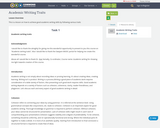
This is a lesson on how to achieve good academic writing skills by following various traits
- Subject:
- Literature
- Material Type:
- Lesson Plan
- Author:
- Kiran Shatiya
- Date Added:
- 10/27/2019

This is a lesson on how to achieve good academic writing skills by following various traits
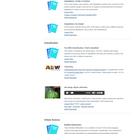
If you could create a new creature, what adaptations would it have and why? In this activity students design a trait card for an organism using behavioral and physical adaptations to help it survive in its environment.
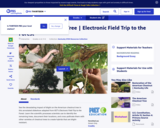
This annotated slideshow adapted from KET's Electronic Field Trip to the Forest illustrates how blight decimated the American chestnut tree and the methods scientists use to identify and pollinate the remaining trees to create blight-resistant trees.
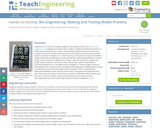
Students act as if they are biological engineers following the steps of the engineering design process to design and create protein models to replace the defective proteins in a child’s body. Jumping off from a basic understanding of DNA and its transcription and translation processes, students learn about the many different proteins types and what happens if protein mutations occur. Then they focus on structural, transport and defense proteins during three challenges posed by the R&D; bio-engineering hypothetical scenario. Using common classroom supplies such as paper, tape and craft sticks, student pairs design, sketch, build, test and improve their own protein models to meet specific functional requirements: to strengthen bones (collagen), to capture oxygen molecules (hemoglobin) and to capture bacteria (antibody). By designing and testing physical models to accomplish certain functional requirements, students come to understand the relationship between protein structure and function. They graph and analyze the class data, then share and compare results across all teams to determine which models were the most successful. Includes a quiz, three worksheets and a reference sheet.
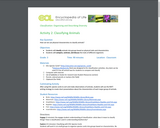
Students use EOL Species Cards to sort and make observations of animals, then use the RAFT writing strategy to create short presentations about the characteristics of each major group of animals.
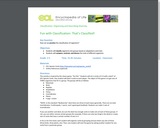
Students apply their understanding of physical characteristics and biological classification of different organisms through a game of classification "Go Fish!"

Secondary educators across Lebanon County, Pennsylvania developed lesson plans to integrate the Pennsylvania Career Education and Work Standards with the content they teach. This work was made possible through a partnership between the South Central PA Workforce Investment Board (SCPa Works) and Lancaster-Lebanon Intermediate Unit 13 (IU13) and was funded by a Teacher in the Workplace Grant Award from the Pennsylvania Department of Labor and Industry. This lesson plan was developed by one of the talented educators who participated in this project during the 2018-2019 school year.
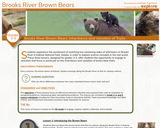
Students experience the excitement of watching live-streaming video of wild bears on Brooks River in Katmai National Park, Alaska, in order to explore science concepts in the real world. These three lessons, designed for grades 3–5, offer students the opportunity to engage in activities that focus in particular on the inheritance and variation of brown bear traits.
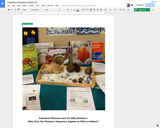
Studying the Fibonacci Sequence is our entry point for studying Heredity: Inheritance and variation of traits.

This activity allows students to practice asking each other questions related to who someone is. Students will practice answering questions about physical characteristics.
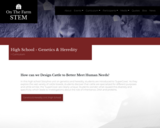
How can we Design Cattle to Better Meet Human Needs?
In this high school Storyline unit on genetics and heredity, students are introduced to ‘SuperCows’. As they explore the vast variety of cattle breeds, students discover that cattle are specialized for different purposes and while similar, the ‘SuperCows’ are clearly unique. Students wonder what caused this diversity and specificity which leads to investigations about the role of inheritance, DNA and proteins.
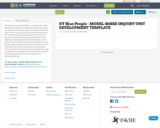
The genes present in the DNA of a chromosome help to explain the genotypic and phenotypic differences seen in organisms of the same species i.e. Fugate Family. The genes code for specific proteins and these proteins can be varied during meiosis when parents (½ from each parent) are passing their genetic information to their offspring. This passing of genetic information can be predicted and traced through many generations, due to the principles of Mendelian Genetics, and can be useful when determining the starting point of a phenotype. The environment a particular species inhabits may help to explain why some genes become favorable, as small isolated populations often have connections to inbreeding (incest).
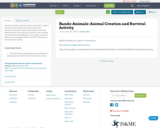
Groups of students will use random dice rolls to create a new species of animals with random traits and behaviors. They may end up with a blind, mouse size, ambush hunter that stalks the fruit that it eats. Another group may get an elephant size, amor plated, carnivore with active camouflage! Will it survive??? That is up to the students to decide...
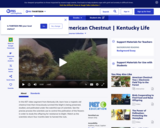
This video segment from Kentucky Life describes how scientists control pollination of one of the few remaining American chestnut trees to develop blight resistant trees.
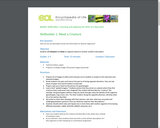
Students practice making observations, describing physical characteristics of organisms, and interpreting information. In pairs, students sit back to back; one student describes a creature and the other draws based on the partner’s description.
Educators Guide for this unit:
http://education.eol.org/lesson_plans/2-5_ScienceSkills_BioblitzSkillbuilderOverview.pdf
Lessons in this unit:
Biodiversity Skillbuilder 1: Meet a Creature
Biodiversity Skillbuilder 2: ID That Bird!
Biodiversity Skillbuilder 3: How Diverse is Biodiversity?
Biodiversity Skillbuilder 4: Modeling Classification
Biodiversity Skillbuilder 5: ID Using a Dichotomous Key
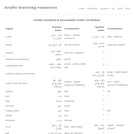
This list presents a basic set of vocabulary words that deal with categories of emotions and personality traits, including verbs and nouns that deal with anger, sadness, happiness, and other descriptions of human emotion and behavior. The majority of words contained within the website are nouns, and some verbs are interspersed. The words and verbs are presented in both modern standard and colloquial Egypt, and feature Arabic text and transliteration.
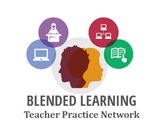
In this problem-based, blended learning mondule, students will investigate what is the single - most defining trait that makes us human? Is it our highly developed speech, our imagination, creativity, or our upright walking posture? Humans have mastered fire, developed tools, art, music, recorded our history, and accomplished a countless number of other things. In this module, students will explore genetics concepts regarding inheritance, natural selection, biology of the human brain, and our hominid evolution over the last two hundred thousand years. Students will utilize guided research, and independent work to formulate an argumentative essay, and substantiating their claim with evidence from their research. When the argumentative essay is completed, students will create a project from a choice board that demonstrates their understanding of one of the concepts of our humanity.